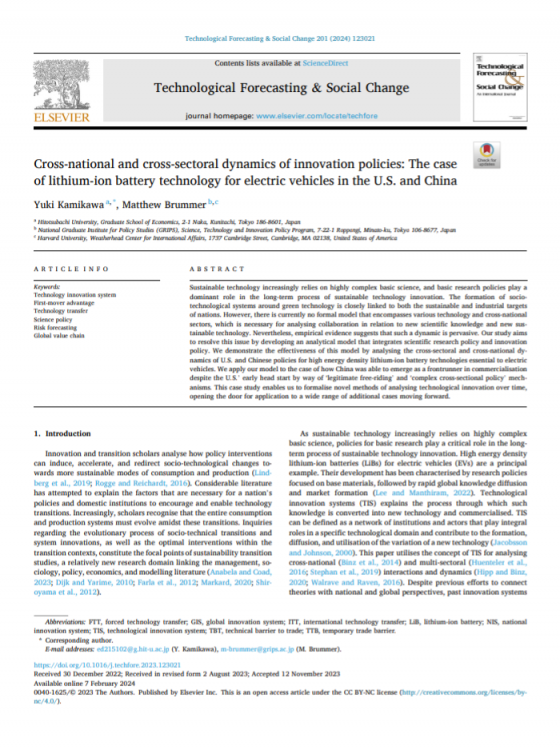Kami menggunakan cookies untuk membuat pengalaman Anda lebih baik. Untuk mematuhi petunjuk e-Pribadi yang baru, kami perlu meminta persetujuan Anda untuk menyetel cookies. Pelajari lebih lanjut .
Cross-national and cross-sectoral dynamics of innovation policies: The case of lithium-ion battery technology for electric vehicles in the U.S. and Chin
Sustainable technology increasingly relies on highly complex basic science, and basic research policies play a dominant role in the long-term process of sustainable technology innovation. The formation of sociotechnological systems around green technology is closely linked to both the sustainable and industrial targets of nations. However, there is currently no formal model that encompasses various technology and cross-national sectors, which is necessary for analysing collaboration in relation to new scientific knowledge and new sustainable technology. Nevertheless, empirical evidence suggests that such a dynamic is pervasive. Our study aims to resolve this issue by developing an analytical model that integrates scientific research policy and innovation policy. We demonstrate the effectiveness of this model by analysing the cross-sectoral and cross-national dynamics of U.S. and Chinese policies for high energy density lithium-ion battery technologies essential to electric vehicles. We apply our model to the case of how China was able to emerge as a frontrunner in commercialisation despite the U.S.’ early head start by way of ‘legitimate free-riding’ and ‘complex cross-sectional policy’ mechanisms. This case study enables us to formalise novel methods of analysing technological innovation over time, opening the door for application to a wide range of additional cases moving forward.

